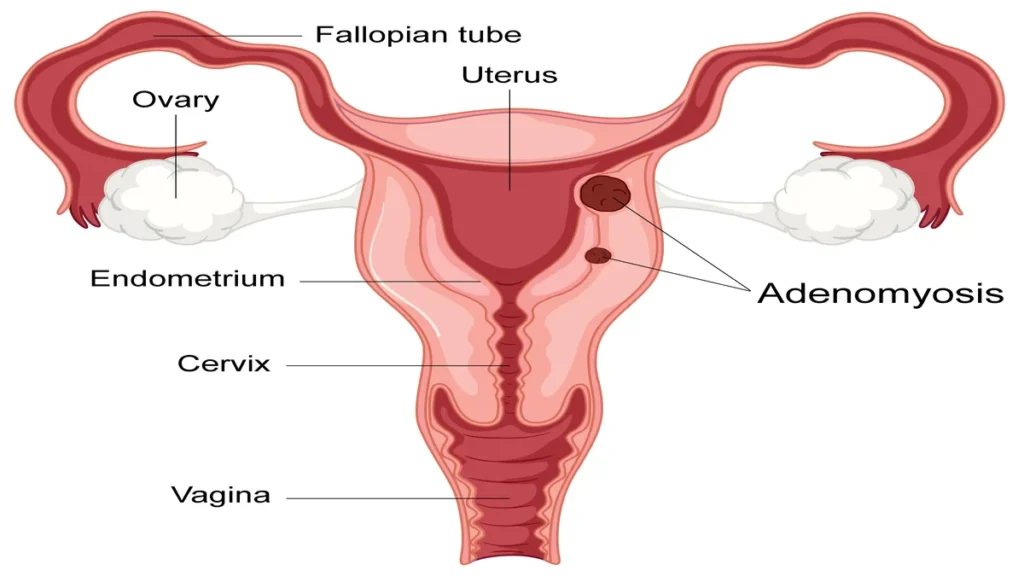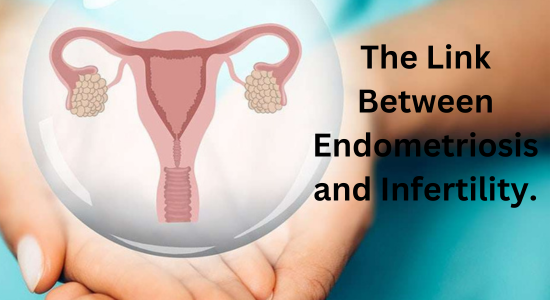Learn about adenomyosis, a condition where uterine tissue grows into the muscle wall. Discover its symptoms, causes, diagnosis, and effective treatment options to manage pain and improve quality of life.
What is Adenomyosis?
Adenomyosis is a gynecological condition in which the endometrial tissue (which normally lines the uterus) grows into the muscular wall of the uterus. This can cause the uterus to become enlarged, leading to pain and heavy menstrual bleeding. Although it is a benign (non-cancerous) condition, it can significantly impact a person’s quality of life.
Symptoms of Adenomyosis
The symptoms of adenomyosis can vary in severity and may include:
- Heavy Menstrual Bleeding (Menorrhagia): Prolonged or excessive menstrual bleeding.
- Severe Menstrual Cramps (Dysmenorrhea): Intense pelvic pain during menstruation.
- Chronic Pelvic Pain: Persistent pain in the pelvic region, not limited to menstruation.
- Enlarged Uterus: The uterus may become swollen and tender.
- Pain During Intercourse (Dyspareunia): Discomfort or pain during sexual activity.
- Bloating and Pressure: A feeling of fullness or pressure in the lower abdomen.
Some people with adenomyosis may have mild or no symptoms, while others experience debilitating pain and discomfort.
Causes and Risk Factors
The exact cause of adenomyosis is not fully understood, but several theories exist, including:
- Invasive tissue growth: Endometrial cells invade the uterine muscle, possibly due to uterine inflammation or surgery (such as C-sections).
- Hormonal influence: Estrogen, progesterone, and other hormones appear to play a role in the development of adenomyosis.
- Stem cell origin: Some researchers believe that misplaced stem cells may contribute to the condition.
- Developmental origins: Some theories suggest adenomyosis may form before birth as the uterus develops.
Risk factors include:
- Being over 40 years old
- Having had multiple pregnancies
- Prior uterine surgery (C-section, fibroid removal, dilation and curettage)
Diagnosis of Adenomyosis
Since adenomyosis shares symptoms with other conditions like fibroids and endometriosis, diagnosing it can be challenging. Methods include:
- Pelvic exam: A doctor may detect an enlarged or tender uterus.
- Ultrasound: Imaging may reveal an enlarged uterus with a characteristic thickened or heterogeneous myometrium (uterine muscle).
- MRI (Magnetic Resonance Imaging): Provides a more detailed view to differentiate adenomyosis from fibroids.
- Endometrial biopsy: Though it does not diagnose adenomyosis directly, it helps rule out other conditions like endometrial hyperplasia or cancer.
Treatment Options for Adenomyosis
Treatment depends on symptom severity, age, and future fertility plans. Options include:
1. Medications for Symptom Management
- Nonsteroidal anti-inflammatory drugs (NSAIDs): Reduce pain and inflammation (e.g., ibuprofen, naproxen).
- Hormonal therapies:
- Birth control pills, patches, or rings to regulate bleeding.
- Progesterone therapy (IUDs like Mirena, injections, or pills) to reduce symptoms.
- Gonadotropin-releasing hormone (GnRH) agonists to shrink the uterus temporarily by inducing a menopause-like state.
2. Non-Surgical Procedures
- Uterine Artery Embolization (UAE): A minimally invasive procedure that blocks blood supply to adenomyotic tissue, reducing symptoms.
- Endometrial Ablation: Destroys the uterine lining, which may help with heavy bleeding but is not effective for deep adenomyosis.
3. Surgical Treatments
- Hysterectomy (removal of the uterus): The only definitive cure for adenomyosis, recommended for severe cases where other treatments fail.
- Conservative surgery (for focal adenomyosis): In some cases, adenomyotic tissue can be surgically removed while preserving the uterus, but this is less common.
Living with Adenomyosis
- Lifestyle changes: Regular exercise, a healthy diet, and stress management may help alleviate symptoms.
- Heat therapy: Applying heat to the lower abdomen can provide pain relief.
- Dietary adjustments: Some people find relief by reducing inflammatory foods and incorporating anti-inflammatory diets.
Conclusion
Adenomyosis is a challenging condition that can cause significant discomfort, but various treatment options are available to manage symptoms. If you suspect you have adenomyosis, consult a healthcare provider for a proper diagnosis and treatment plan tailored to your needs.



Pingback: PCOS vs Endometriosis: Key Differences and Management Tips